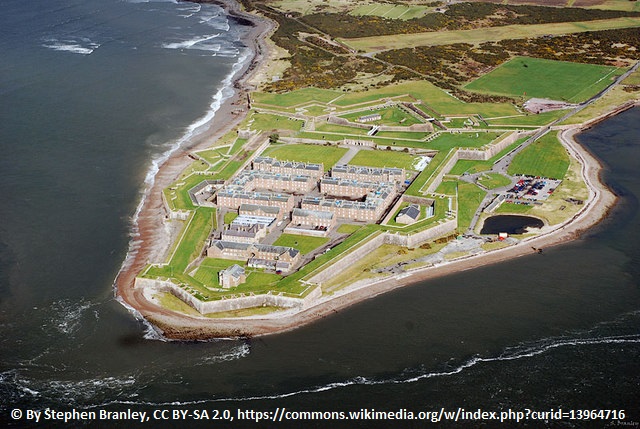Fort George

Fort George Details
Fort George, a substantial C18 garrison fort occupying a coastal promontory still in use today but open to the public.
- Closest To: Nairn, Inverness
- Access: Chargeable Public Access
- Grid Reference: NH761567
Fort George is built on a promontory jutting into the Moray Firth near rdersier, a few miles east of Inverness. It is the last of three forts of this name in the Inverness area, the first of which was built on the site of Inverness Castle, and the second of which was built in what is now the Longman Industrial Estate on the shores of the River Ness just to the north of the town centre. Traces of the first can still be seen on the northern side of Inverness Castle, and some of the great bastions of the second along with the forts clock can be seen in the industrial estate today, although they are well hidden and unmarked.
After the Battle of Culloden, it was decided that a larger permanent artillery fort was needed in the Highlands, and William Skinner designed the 16 acre site, capable of holding a garrison of 2000 men. By the time it was completed in 1769, it had become redundant. Occupying almost the entirety of the promontory, it is roughly rectangular in shape, but with large bastions projecting from the corners and mid points of the sides. To the east, where it faces landwards, the bastions are perhaps 50 metres in length, and a central triangular outwork with its own triangular bastions protects the entrance to the fort.
Today it remains a military establishment, but large portions are open to the public via Historic Scotland, and Fort George is used as the site for re-enactments as well as having sections restored to reflect the changing conditions of garrison life over the ages. The Lieutenant-Governor’s House is now home to the Highlanders Museum, the regimental museum for the Queen’s Own Highlanders and the Lovat Scouts.
Official Historic Scotland page
Become a supporter of my work to access a more detailed history